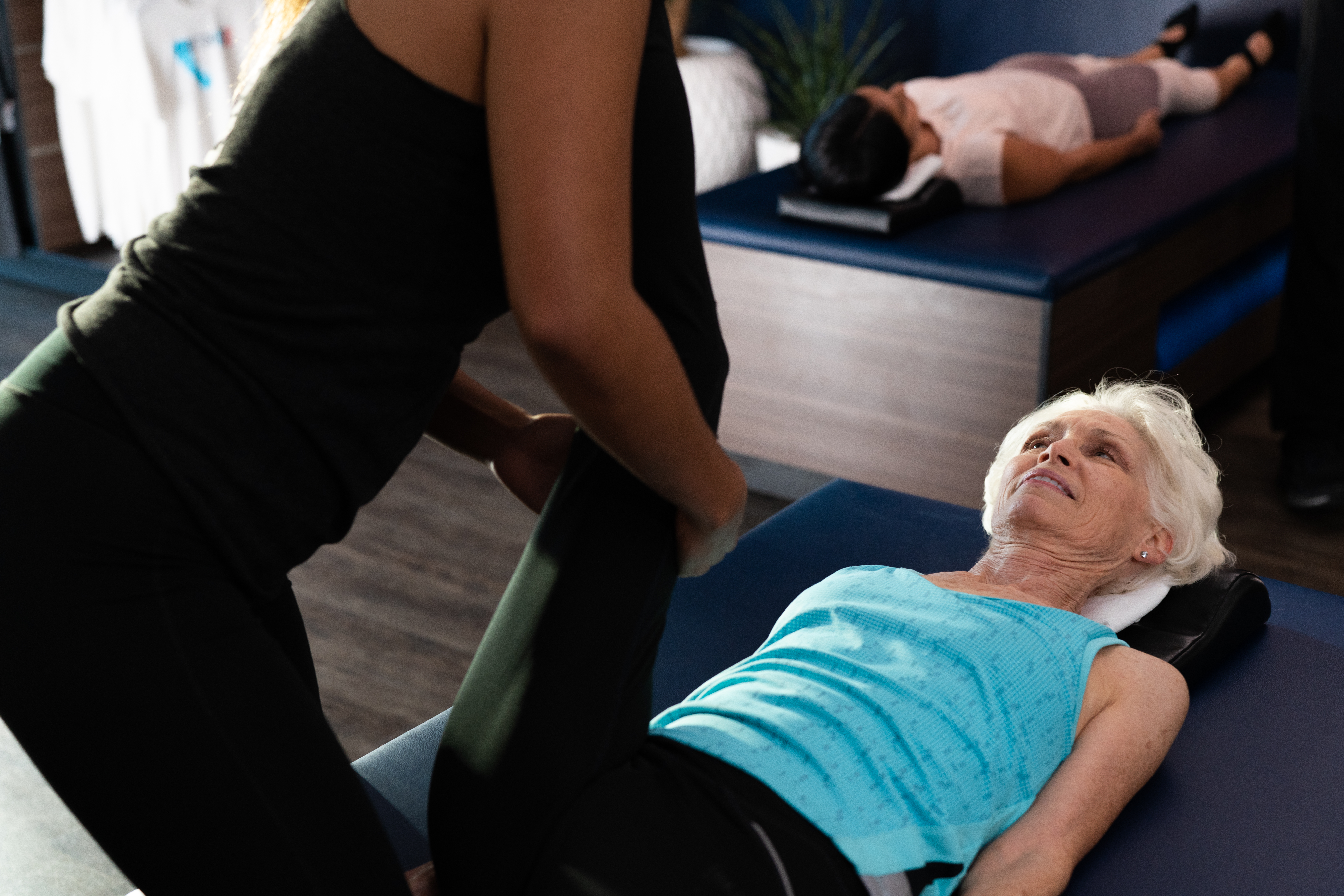“It’s no fun getting old”
“I feel like the Tin Man from the Wizard of Oz”
“Just getting out of bed in the morning can be a challenge”
Remember when you were little and you saw an older person walking down the street, half bent over? Your thoughts may have been…”that will NEVER be ME!!!” or, “I am young and strong - I will never be THAT person!”
At what point in time did you realize you were possibly becoming THAT person? How could this have happened? As we get older, our muscles start to deteriorate and our range of motion decreases. Assisted stretching is an absolute necessity as we progress with age to keep our bodies moving!
If you are still in incredible shape and don’t have any aches and pains yet…keep up the great work because it is the foundation you build from as early an age as possible that supports better movement well into your later years in life!
If you are finding yourself waking up and struggling to get out of bed, feeling like your joints need to be lubricated just to get up from a chair and you're physically lacking energy overall then improving your flexibility could be just the activity you need to make you feel younger again. And yes, you can start at any age and be able to see/feel the benefits of a regular flexibility program.
Let’s take a brief look at what is happening in our bodies as we age and the role flexibility training has in improving our quality of living.
LIFE EXPECTANCY
In 1922, the life expectancy was 58.4 / 61.0 years (men/women)
In 1970, the life expectancy was 67.1 / 74.7 years (men/women)
In 2022, the life expectancy was 78.1 / 81.1 years (men/women)
We have seen an increase of 20 years in our life expectancy over the past century. This is incredible when we think “what we can do with an extra 20 years of living!” But what is quantity without quality? We want the vessel we live in (our body), to be able to withstand this extended lifetime with, not only minimal risk to ailments, disease and injuries but to have the energy and strength to be able to do whatever our hearts desire.
What happens to our muscles as we age?
Our muscle mass decreases 3-8% per decade after the age of 30 and the decline can be greater after the age of 60. This reinforces the importance of a regular exercise/flexibility program as we age. This is referred to as Sarcopenia.
The loss of muscle tissue which is considered the natural part of the aging process. It can be reversed with proper diet and exercise (strength and flexibility training).
Muscle fibers reduce in numbers and shrink in size and we see a decrease in muscle mass that can lead to an increase in the risk of falls and injuries. Improving range of motion (ROM) in our joints results in better muscle balance which will help to see improvements in our posture and balance.
The signal for muscle growth also lessens as we age making it more challenging to gain muscle size and strength (having said that, it is still possible with regular exercise and a healthy diet).
Why do we lose flexibility as we age?
Our joints become stiffer and less flexible. This is apparent with prolonged periods of sitting and standing therefore, movement is vital.
Cartilage in joints becomes thinner and we see a decrease in the fluid that lubricates the joints. Regular mobility exercises help to keep the joints lubricated and moving more freely.
Ligaments will tend to become less pliable contributing to that feeling of stiffness.
Water loss in the muscle tissue. Staying hydrated is extremely important to our well being and can be achieved by adding more fruits and vegetables to your diet as well as increasing your water consumption.
Can we improve flexibility as we age?
Absolutely!!!
A few of the benefits of flexibility training include:
Increases blood flow and circulation
Improves range of motion and overall movement
Maintain muscle strength
Benefits of stretching on a regular basis include:
Improved posture and balance
Decrease in pain
Improved strength
Improved mood
Stretchlab’s Flexologist Training Program (FTP), provides the knowledge and training for a Flexologist to progressively improve a person’s quality of living as they age. This begins with a full body assessment to determine areas of tightness, restriction, weakness in muscle strength and motor control. A program is then designed based on a Progression / Periodization model that will be created from the initial assessment. What this means is a program will be designed building a strong foundation so you will progressively continue to see improvements in mobility and muscle activation during the early stages of programming and progressing to see improvements in posture and overall symmetry further into the program. You will see and feel changes in the way you move, walk, stand, sit, sleep. You will create both short and long term goals with your Flexologist who will continually check on your progress and how you are feeling in your body to make any adjustments to your program and/or goals.
Depending on the frequency of visits and the consistency of attendance, results can begin to be seen in 6-8 weeks but the effects of feeling better will be felt after the very first session. Remember that Flexibility is the key to Longevity!



